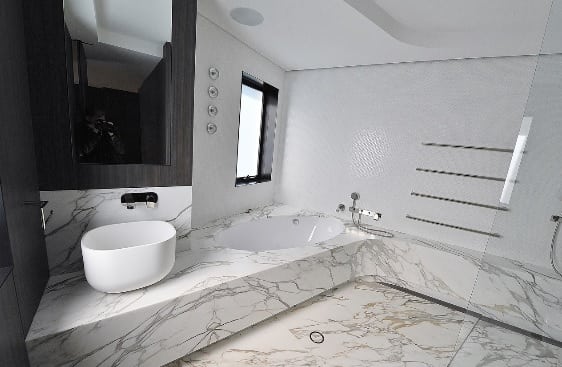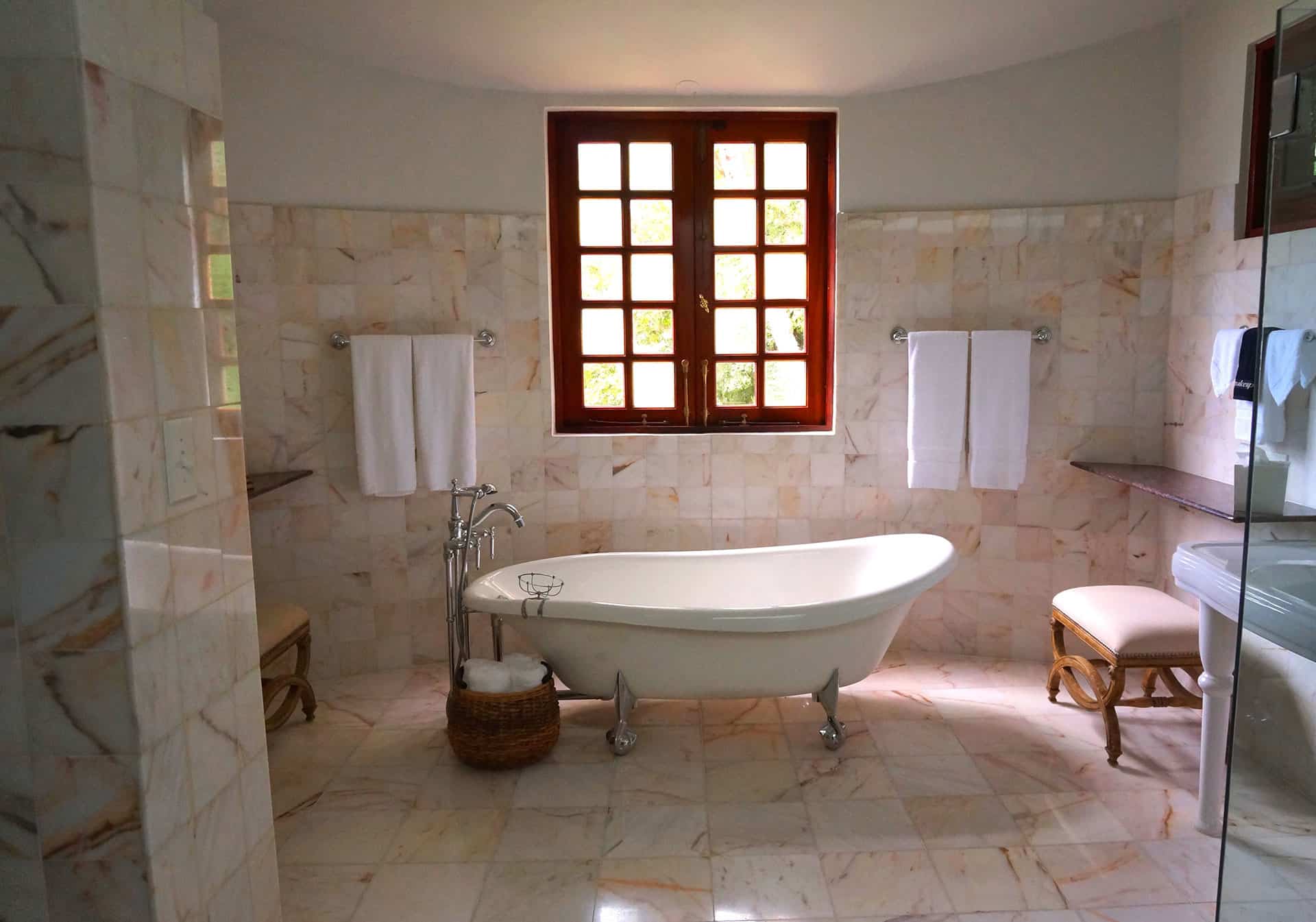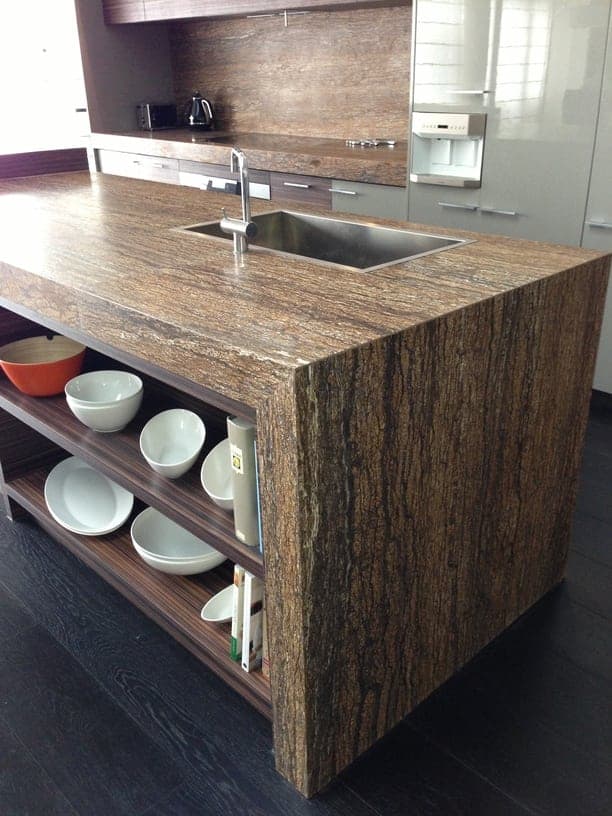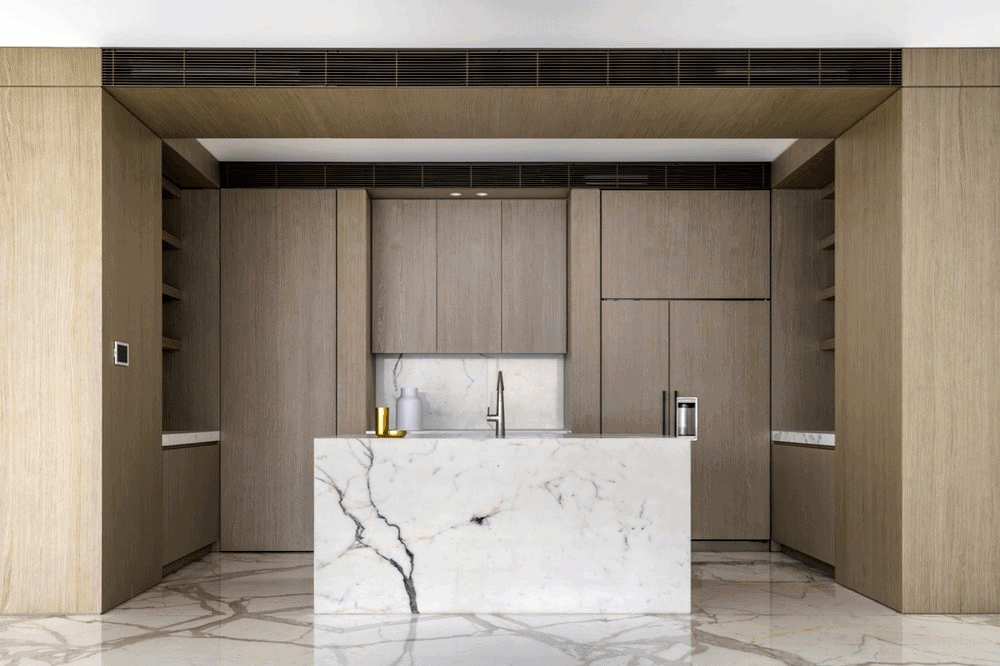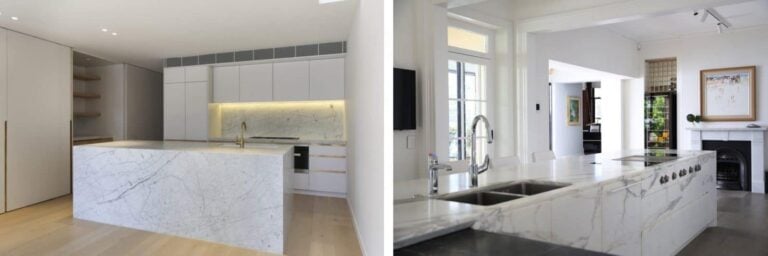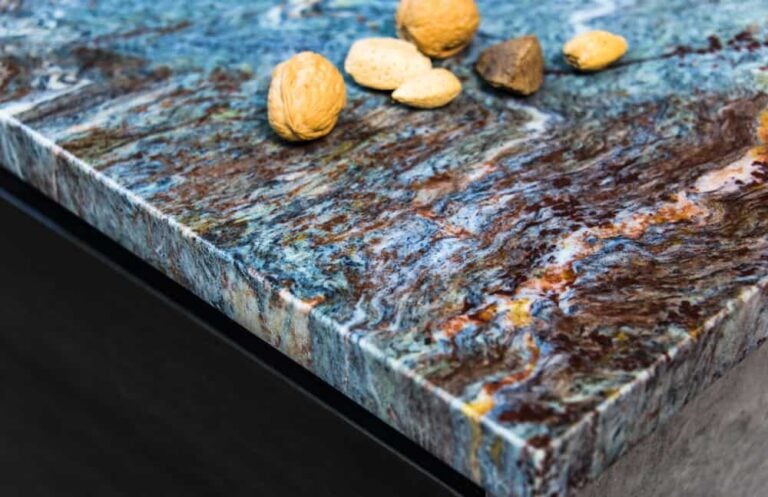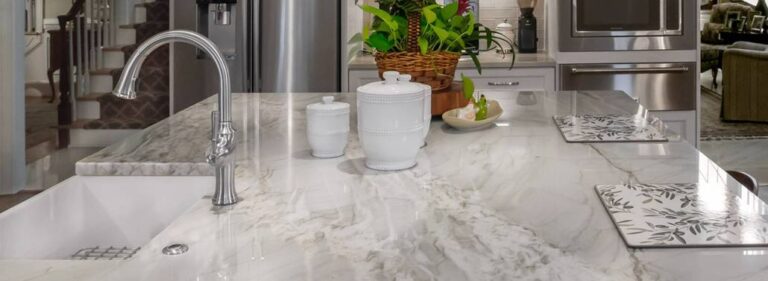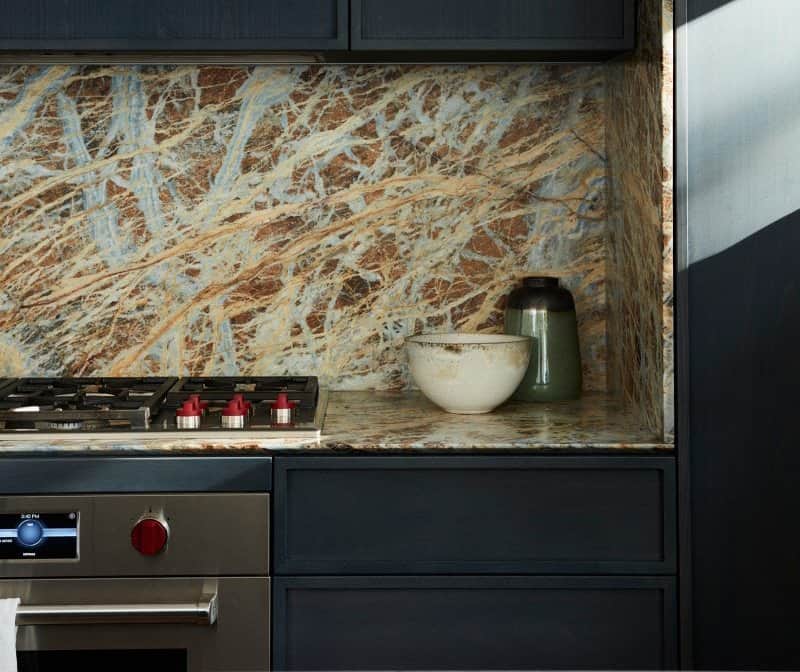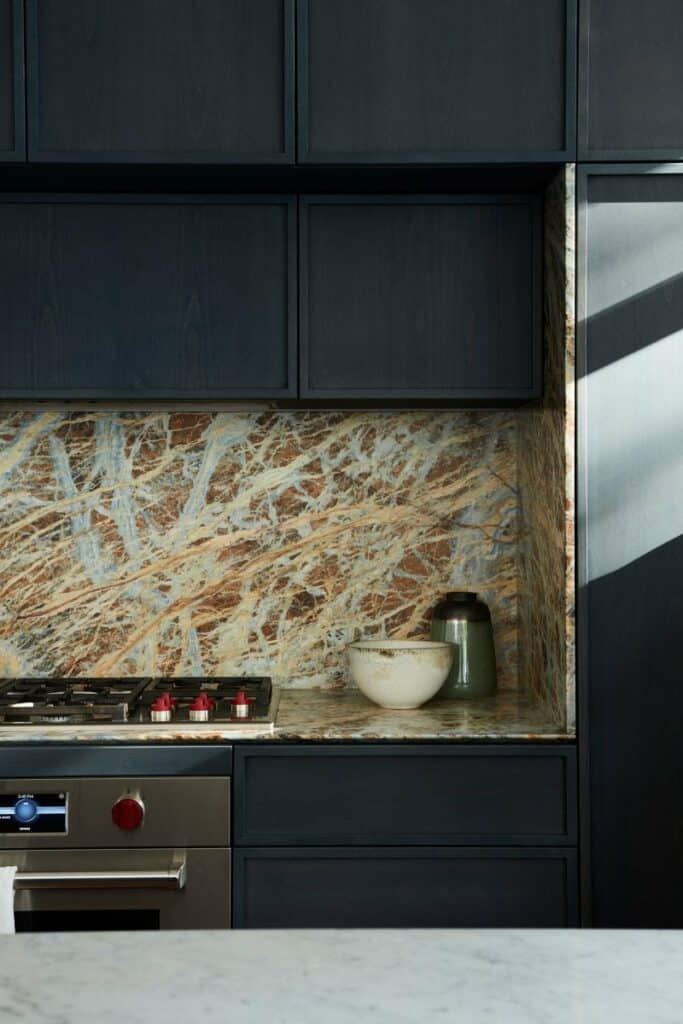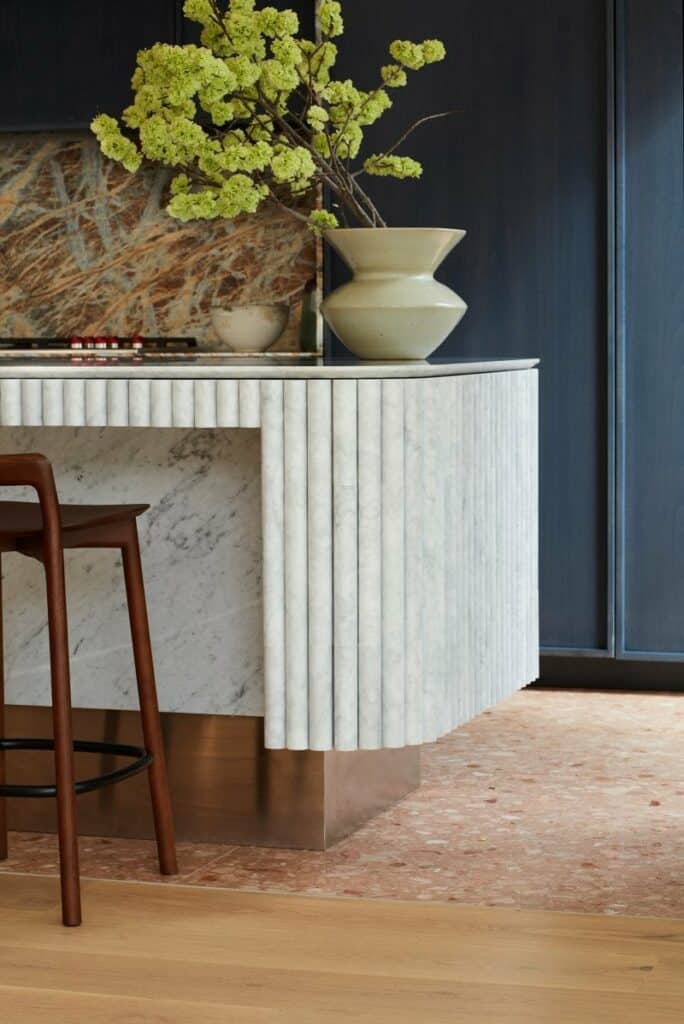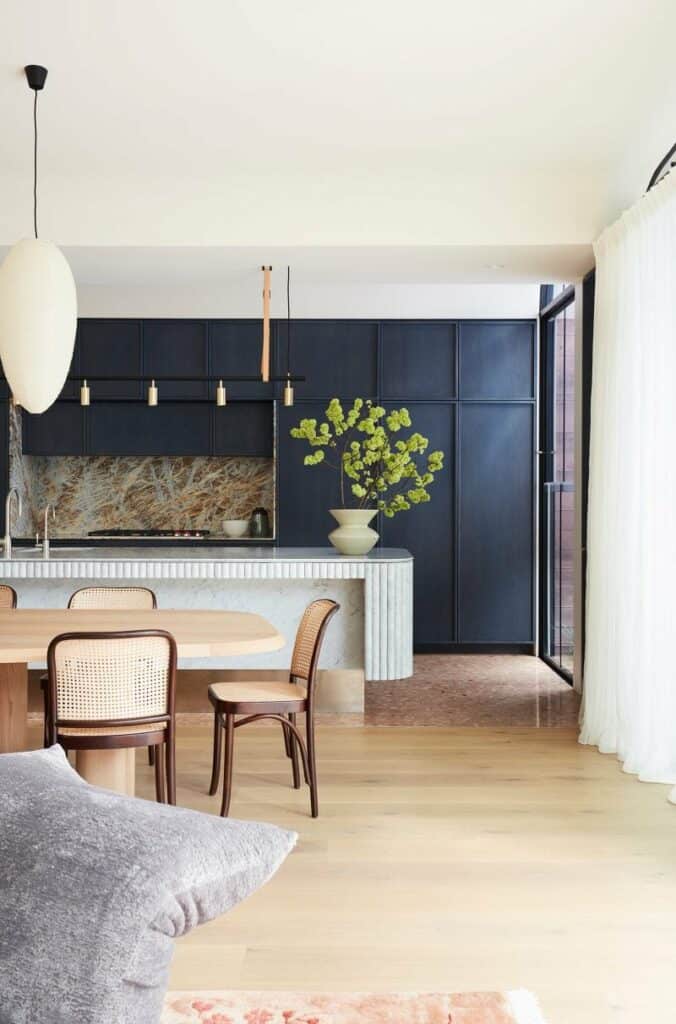For many people nowadays, the bathroom is no longer just a functional room. Many view their bathrooms as a personal …
Continue reading15 Small Bathroom Renovation Ideas
Ideas for Small Bathrooms to Look More Spacious
Your bathroom is one of the most important areas of the home. From the frequency of its use everyday to its private, intimate nature, there are a lot of aspects to the bathroom that necessitate thought in design and styling.
If you’re looking for ideas for small bathrooms, you’ve come to the right place. Whether your bathroom is unusually shaped or you simply want to know how to make a small bathroom appear larger, we’ve put together a list of helpful ideas to inspire you to transform your bathroom for the better.
- Light and Bright
The very first element to consider is the colour scheme. While there are very good reasons to consider using bold feature colours or opt for a darker moody palette, if you’re wanting to create a feeling of spaciousness stick with light and bright colours.
Whites, off-whites and similarly light shades open up even small spaces in wondrous ways and help to bounce the natural or artificial light streaming into the room. There are plenty of brightly coloured natural stones you can use on your bathroom walls or floors.
- Choose the Right Paint
It’s not just the colour that makes a big difference in the bathroom, but the type of paint you use. If you’re really wanting to reflect as much light as possible to make the small area look as large as possible, consider choosing high gloss paint.
- Glass Shower Doors
Keeping the light flowing throughout your bathroom is a key way to ensure the room feels bigger than it is. Your shower offers another opportunity to do exactly that. By using a glass door for your shower you will immediately feel the difference.
Without the obstructions of an opaque shower door or curtain, you’ll be taking advantage of every square centimetre of room. The less obstructions clogging up your peripheral vision and sense of space, the better.
- Incorporate Mirrors
Mirrors are not just a practical necessity in a bathroom. They’re a very effective feature for making a small bathroom look bigger. By elongating the visual sense of space, mirrors can be incorporated in a few ways:
Option A – One Large Mirror
A large mirror that extends over a significant portion–if not all–of one of the walls in your bathroom can have an enormous impact on the feeling of spaciousness.
Option B – Multiple Mirrors
Alternatively, incorporate multiple, smaller mirrors in your bathroom to give the impression of almost endless space. One note on this option however, is that you may need to consider the size and design of your bathroom, as not all small bathrooms will complement multiple mirrors in such a confined area.
- Large Stone Tiles
One of the most common questions we get is, “do larger tiles make a small bathroom look bigger”? While the answer will depend on numerous other factors, generally opting for large stone tiles for your floor cladding and walls is going to help make a small bathroom appear larger.
Why? Less grout lines and visual divisions will make the wall (and floor) less cluttered. Even small bathrooms that are devoid of clutter or too much visual stimuli will feel incalculably larger.
- Floating Vanities
One of the most popular and effective ideas for small bathrooms is the concept of keeping the floor devoid of unnecessary clutter and objects. However, there’s a lot to incorporate in a bathroom, from the toilet seat to the shower/bathtub.
That’s why we recommend floating vanities and basins. By lifting the vanity off of the floor it will not only clear more space beneath it but it will look a lot cleaner and more sleek. All of this will positively contribute to the feeling of space in the room.
- Use a Ledge/Shelf
Ledges or shelves can offer a lot of practical and aesthetic value. Whether your ledge sits above the vanity or even if you have an in-built shower shelf, either option offers a convenient storage solution without adding too much cabinetry and taking up too much space.
One important thing to remember with this idea, is that if you want to make your small bathroom appear larger, avoid letting the shelf become cluttered with too many objects or unnecessary items. Minimalism is the key here.
- Closed Cabinetry
Unless you’re opting for a floating, minimalist shelf and are able to keep your items to a minimum, obt for closed cabinetry. Overflowing vanity benchtops are going to make the entire area feel a lot more closed in and busy.
Closed cabinetry keeps any mess out of the immediate eyeline and keeps the surfaces as sleek and visually clean as possible.
- Attach the Towel Bar
Towel bars are highly practical additions in a bathroom. Where possible, if you are able to attach your bar to a pre-existing vanity or similar structure, you’ll be making the most of the small amount of space. An independently installed towel bar will only add another visual element of clutter to the wall.
- Minimal Decorations
While the appeal of decorating your bathroom is understandable, if you’re really dedicated to making the most of the space we recommend paring back the accessories and additions. The more minimal your decor and decorations the more your bathroom is going to feel visually and spatially larger.
- Skylights
Not everyone will have the structural or budgetary means of installing a skylight, but it can be a transformational idea for small bathrooms. The infusion of natural light from up above can work true miracles in turning a tight, enclosed space into a larger and more spacious area.
Euro Marble – here to help you transform your home!
If you’d like more ideas on how to make your small bathroom appear larger, make sure to reach out to our team here at Euro Marble. We love helping our customers enjoy every nook and cranny of their home and can’t wait to help you too! Contact us today right here.
Walk-In Shower Ideas To Add Luxury To Your Bathroom
Walk-in showers are becoming more and more popular for a host of reasons. For one, they add an element of luxury that can’t be overvalued. Secondly, they look absolutely great in bathrooms both big and small. Thirdly, they’re endlessly practical.
From construction material to lighting, storage and shape, there are many different elements to consider when designing a walk-in shower. To help guide you, and maybe inspire some creativity on the side, we’ve put together a number of walk-in shower ideas for small bathrooms and large bathrooms alike.
The Seamless Entry
We’ve included a few doorless walk-in shower ideas on this list but nothing brings the luxe and the functionality as a seamless floor leading into your walk-in shower with no step, lid or drop. Especially convenient if the shower is doorless, whether your flooring is made of stunning marble or any other material, your shower will feel infused with the rest of the bathroom and make going in and out a comfortable breeze.
Glass Panelled Walls
Most walk-in showers need some sort of door, partition or wall even if they are doorless on the other side. In some bathrooms, you might only have half a wall with the other half exposed. In any case, using large glass panels is an excellent idea. Not only does this allow light to filter throughout the bathroom, it also opens up the space visually. Being able to see through, into and out of your walk-in shower will make you feel like you’re washing up in a space multiple times bigger than it necessarily is.
Non-enclosed Walk-In Shower
This shower idea may not be suitable for all bathrooms but if you can keep your walk-in shower completely unenclosed, you’ll be taking minimalist seamlessness to a whole new level. Of course, you might want to include a small raised step to stop the water from getting everywhere, but larger bathrooms may not even need this. By limiting the separation between your bathroom and the shower you’ll be maximising the openness of the space as well as the potential for further style design.
Arched Walk-In Shower
This walk-in shower idea is bold and beautiful. Coupled with a glass door or no door at all, an arched entrance into a walk-in shower is grand, opulent and stunning. You can choose to make the archway out of tiled natural stone or any other material, and choose whether you want it to match or contrast as a feature against the rest of the shower’s walls.
Spa and Resort Style
What could be nicer than having a spa in your own bathroom? With a walk-in shower, it’s quite easy to achieve the spa style aesthetic. From a rain showerhead (more on that in a moment) to natural materials such as wood and bamboo, there are many ways in which you can bring the luxury of a resort or spa into your home. We’d recommend pairing a spa aesthetic with either a white stone palette along the walls or floors, or a black and white aesthetic.
Storage Built In: Recessed Wall Shelf
As far as walk-in shower ideas for small bathrooms go, built in storage is among the most practical. There are a lot of items used in a shower: shampoos, soap, body wash, loofah… Forget leaving them on the floor or sitting on an ugly shelf. With a walk-in shower, you want to preserve the spaciousness. A wall shelf recessed into the wall is an excellent way to keep the effect of a walk-in shower while having everything you need right where you need it.
Built In Shower Seat
Showers are a place where you wash yourself, sure, but they can also be retreats! What allows you to sit back (literally) and relax more than a built-in shower seat. Whether you choose a floating marble seat above the floor or a bold block-style seat is up to you, but this is one walk-in shower idea that we just love to see! Plus, you can always use it as a mini-table for keeping shampoo bottles and soap while you’re in the middle of using them.
Floating Vanity
It’s not just about what’s in your walk-in shower; consider also what is around your shower. A floating vanity, minimalist in style and sleek in design, will perfectly complement the overall aesthetic of a walk-in. There are plenty of options available, so you can find the size and storage solution that works for you without compromising on style.
Rainfall Shower Head
There’s a lot of potential when it comes to your shower head but we love a ceiling-mounted rainfall shower head. Not only does this just look a treat, there’s also practical value in how nicely and evenly the shower water rains down on you. While regular showers are limited in what sort of shower heads they can incorporate, your walk-in shower allows you to go for gold.
Windows
Good lighting in a bathroom is an essential, but natural light is an absolute win! If your walk-in shower can be installed near a window you’ll benefit from natural light as well as the opportunity to access fresh air and a nice breeze.
An alternative natural light option is to install a skylight above. You’ll be amazed at the wonders this can do to a space. It’ll open up your bathroom and your walk-in shower as well as shine a generous, picturesque glow into the room.
Natural Stone Tiling
Here at Euro Marble, we make no apology for our unrestrained love of all things natural stone. Whether you choose dark, moody granite slate tiles with a rugged texture or the iconic and opulent look of a light marble, there’s no going wrong with stone in a walk-in shower. There’s even an opportunity to customise the pattern and styling, with subway tiles being a timeless, classic look.
Let’s Bring Your Ideal Walk-In Shower To Life
Has one of our walk-in shower ideas inspired you? Would you like to hear some more?
Either way, feel free to give the Euro Marble team a call. We love bringing our customers’ dream homes to life and can’t wait to help you too!
Powder Room Ideas to Seriously Impress Guests
A powder room, sometimes referred to as a half bath or guest bath, is a smaller bathroom that normally contains either a bathtub or a shower, or neither. Finding the right inspirational powder room ideas for your home is really important because, after all, it’s one of the few rooms that guests and visitors are almost certainly going to visit.
Despite being a relatively small space, there’s still plenty of opportunity to impress guests! To help you out, we’ve put together some modern powder room ideas to inspire you to create something truly special in your home.
Bold Walls
Your powder room offers the perfect opportunity to go bold without risking overdoing it. If you’re thinking of incorporating a bold colour somewhere in your home, or even a stunning marble wall, your powder room is a great starting point. A bold feature wall in the half bathroom will be effective enough to impress guests without offering too much of a contrast with the rest of the house’s aesthetic.
Stone Tiled Flooring
From the wall to the floor… Floors tiled with natural stone are an utterly gorgeous addition to any home. However, stone is not the cheapest of building materials and for good reason, they are highly durable, beautiful and hard wearing. Nonetheless, if you’re on a budget, you can still benefit from stone flooring by using it in your powder room. The relatively small square footage gives you the opportunity to really indulge to great effect.
Powder Room Vanity
Most powder rooms generally have one vanity and sink. There are plenty of modern powder room ideas for vanities in general, but we really love the minimalist aesthetic of a pedestal sink. There’s no need for excessive storage, unlike your ensuite bathroom, so make the most of choosing a vanity and basin that oozes style but still takes up as little space as possible. For extra impressiveness, you can always add a small, tasteful lamp or fancy mirror above the powder room vanity as well.
Light It Up
While we’re on the subject of lighting, powder rooms are excellent places for including some decorative and practical lighting fixtures. Remember, it’s unlikely that someone is going to be getting ready to go out in your powder room, so you don’t need industrial-grade lighting. A stylish pendant, mini chandelier or even flushed fixtures are all simple ways to make a fantastic impression.
Think: Space
Standard powder rooms are rectangular in shape and probably don’t offer huge amounts of space. Nonetheless, there are still a number of easy ways in which you can pack more into less.
- Add a corner shelf unit – Corners are notorious wastes of space, so finding a shelf unit small enough to wedge in there is a great utilisation of an otherwise dead area.
- Install a shelf above the toilet – The room above your head on the toilet offers another opportunity. As long as it’s not too obstructive for someone sitting down and standing up, it’s a great little addition.
- Hanging baskets – A small, strategically placed basket hanging from the ceiling won’t just look a treat, it also offers practical storage value as well.
- Accent table – This powder room idea will depend on the size of your space, but a small table with a closed cabinet can be very helpful in providing storage space for toilet paper, toilet spray and more.
Accessorise
Decorating and accessorising your powder room can offer a real opportunity for self-expression and bold, stylistic choices. From the small bin in the corner to the cover for the tissue box, think about opportunities to include impactful accessories that won’t take up space needed for other things.
Artwork
Many modern powder rooms also feature some art on the wall. Nothing makes a grander impression on guests than an artistic painting hanging in a well-chosen spot. Of course, if your powder room has a shower or bath in it, as many do, make sure to consider how the humidity may affect unprotected artwork.
Beware of Clutter
Too often, especially as powder room ideas develop over time, you can find the small space becoming cluttered with too many little accessories or decorative ornaments. Apart from becoming visually overwhelming, it also causes guests to feel that the space is actually smaller than it is. Stay minimalist and focus on prioritising space.
Fixtures
From the toilet paper holder to the hand towel rack and even the taps and faucet, the fixtures in your powder room may be small in stature but they offer a lot of potential in terms of impact. Think about the overall design aesthetic of the powder room or your whole house for that matter. If you’re focusing on an industrial style, opt for bold brass fixtures. If you want a minimalist and modern aesthetic, choose black and bold fixtures with defined edges. Or if you’re after opulence and luxury, consider gold or ornately designed racks, taps and faucets.
The Mirror
Even powder rooms need to have a mirror, and this offers another opportunity to really make a lasting impression on your guests. There are many fantastic decorative mirrors available in a range of shapes, sizes and patterns. Consider the size of the wall against which your powder room vanity sits. You want a mirror that won’t cut off your guest’s head and also won’t become overbearing and overwhelming. As with the fixtures, consider your room’s aesthetic. Do you want a minimalist mirror or something with an intricate frame? The choice is up to you as both options can look utterly gorgeous.
Need more inspo? Give us a call!
The team here at Euro Marble are specialists in a lot more than just marble and natural stone! We love all things home design and reno and would love to chat to you about the many and varied powder room ideas you may have. So, get in touch with us today or come in and visit our showroom.
4 Natural Stone Options for Pool Decks in Australia
Here in Australia, our glorious climate allows us to spend a lot of time by the pool. The area around your pool is…
Continue reading5 Ways Natural Stone Can Increase Your Home’s Value
Whether you are planning to sell your Sydney home in the near future, or you just want to renovate using materials…
Continue readingChoose Marble for Your Commercial Project
Sydney is a beautiful city with some stunning buildings and architecture, and very few materials ooze opulence and timelessness quite like marble. Here at Euro Marble, we have a rich history
Continue reading
